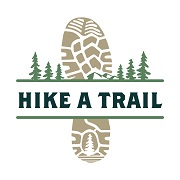Trekking poles are a great way to help you stay strong and steady while hiking. In this article, we will discuss how to use trekking poles. It is important to understand how trekking poles work. These are essentially long, thin poles that you use to help you walk or hike. They come with a variety of different tips, straps, and other attachments that make them unique and effective for different types of hiking.
1: How Do I Choose The Right Trekking Poles?
A few things to consider when choosing trekking poles. First, decide what type of terrain you will be using them on. If you will be using them on rough terrain, look for poles with stronger tips and grips. Second, consider the weight of the poles. Heavier poles will be more difficult to carry, but they will also be sturdy. Finally, think about the height of the poles. Taller people will need longer poles, while shorter people will need shorter poles.
2: What Are The Different Types Of Poles?
There are three main types of trekking poles: telescoping, folding, and fixed-length. Telescoping poles are the most popular type, as they can be adjusted to different lengths to suit the terrain. Folding poles are ideal for backpackers, as they can be packed away easily. Fixed-length poles are the lightest and strongest option, but cannot be adjusted to different lengths.
Telescoping: There are several different types of trekking poles, but the most common option is the telescoping pole. These poles typically consist of two or three sections that nest into each other, with a locking mechanism to keep them in place when extended. They’re highly adjustable and can be packed down small for easy transport.
Folding: Folding trekking poles usually have three sections that fold to roughly 1/3 of their full length. Held together by an internal tension cord, each section unfolds to create a single shaft when locked into place (similar to a tent pole). Though they pack down small and are often lighter than telescoping poles, most models are not length adjustable. Some folding trekking poles do offer one telescoping section, which will allow you to adjust the length of the pole.
Fixed: If you’re looking for a trekking pole that’s different from the norm, fixed-length, straight-shaft trekking poles may be for you. These poles are not adjustable and don’t collapse, making them difficult to stow away when not in use. However, their unique design can offer certain benefits on the trail. Just keep in mind that due to their storage impracticality, fixed poles may not be the best choice for everyone.
3: Which Pole Is Best For Me?
First, think about the type of terrain you’ll be using them on. If you are mostly hiking on trails, look for poles with tips that can grip the ground well. For more rocky or icy terrain, you’ll want tips that can provide traction and stability. Second, consider the weight of the poles. Heavier poles will be more durable, but lighter poles will be easier to carry. Finally, think about the features you want in a pole. Some trekking poles come with built-in compasses or GPS units, while others have storage compartments for carrying snacks or extra gear. Choose the features that are most important to you and compare different models before making your final decision.
4: How Do I Use My Poles?
Trekking poles are most effective when used in pairs. To use them, hold one in each hand and plant them on the ground ahead of you with each step. Push down on the poles to help you balance and maintain your footing. Trekking poles can also be used to help you climb hills and slopes by providing additional support.
Some tips for using trekking poles include:
- Keep your arms straight and close to your sides when using them. This will help keep your balance and prevent you from losing your balance on steep trails.
- Always use trekking pole tips that are designed for the terrain you are hiking on. For downhill hiking, choose a tip that is made specifically for hills and slopes. For flat terrain, go with a more standard tip.
- When strapping your poles together, ensure the straps are tight but not too tight. This will help reduce the chance of slipping on the trail and falling down the hill.
- Do not use trekking poles as a crutch – they are not meant to be used as support systems for your entire body weight. Instead, rely on your own strength and balance to stay safe while hiking.
5: How To Avoid Injury When Using Poles
If you’re planning on using trekking poles to help you hike up a mountain, it’s important to avoid injury. Here are some tips:
- Make sure the poles are the right size for you. If they’re too long or too short, it’ll be harder to use them properly and you could end up injuring yourself.
- Start slow. Don’t try to go too fast or too far on your first hike with poles. Build up your endurance and strength gradually so that your body can get used to using the poles.
- Be careful on uneven terrain. Poles can help you keep your balance, but they can also trip you up if you’re not careful. Watch your step and be mindful of where you’re placing your poles.
- Listen to your body. If something feels off or hurts, stop using the poles and take a break. It’s better to rest than to push yourself too hard and end up getting injured.
Now that you know how to use trekking poles, get out there and explore the great outdoors! They’re a great tool for both beginner and experienced hikers alike.
Donation for Author
Buy author a coffee






